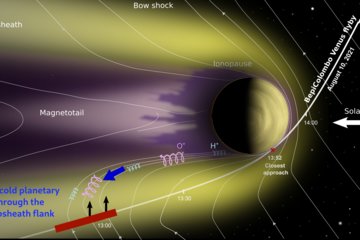All genres
21.
Journal Article
Consistent scaling laws in anelastic spherical shell dynamos. Astrophysical Journal 774, 6 (2013)
22.
Journal Article
Dipolar versus multipolar dynamos: the influence of the background density stratification. Astronomy and Astrophysics 546, A19 (2012)
23.
Journal Article
Effects of compressibility on driving zonal flow in gas giants. Icarus 219, pp. 428 - 442 (2012)
24.
Journal Article
Long-term magnetic field monitoring of the Sun-like star ξ Bootis A. Astronomy and Astrophysics 540, A138 (2012)
25.
Journal Article
A test of time-dependent theories of stellar convection. Astronomy and Astrophysics 530, L7 (2011)
26.
Journal Article
Convective quenching of stellar pulsations. Astronomy and Astrophysics 528, A6 (2011)
27.
Journal Article
Anelastic convection-driven dynamo benchmarks. Icarus 216, pp. 120 - 135 (2011)
28.
Poster
Magnetic field morphology of the ice giants linked to their internal structure. 5th Meeting of the DFG-SPP Planetary Magnetism, Nördlingen, Germany (2015)











